
Magnetochemistry
Scope & Guideline
Pioneering Research in Magnetochemistry
Introduction
Aims and Scopes
- Magnetic Materials and Their Properties:
Research on the synthesis, characterization, and understanding of various magnetic materials, including their structural, magnetic, and electronic properties. - Applications of Magnetic Materials:
Exploration of practical applications of magnetic materials in fields such as catalysis, drug delivery, energy conversion, and environmental remediation. - Nanomaterials and Nanocomposites:
Focus on the development and application of magnetic nanoparticles and nanocomposites, with particular attention to their unique properties and potential biomedical applications. - Theoretical and Computational Studies:
Utilization of theoretical models and computational techniques to predict and analyze the magnetic behavior of materials, including spin dynamics and magnetocaloric effects. - Interdisciplinary Research:
Encouragement of interdisciplinary studies that combine magnetochemistry with fields such as biology, chemistry, physics, and materials science, enhancing the understanding of magnetic phenomena.
Trending and Emerging
- Magnetoelectric Materials:
A growing interest in magnetoelectric materials that exhibit both magnetic and electric properties, which have potential applications in sensors, actuators, and data storage devices. - Biomedical Applications of Magnetic Nanoparticles:
An increase in research focused on the use of magnetic nanoparticles in biomedical applications, including targeted drug delivery, magnetic resonance imaging, and hyperthermia treatment. - Sustainable and Green Chemistry Approaches:
Emerging studies emphasizing sustainable methods for synthesizing magnetic materials, including green chemistry principles and environmentally friendly processes. - Magnetically Induced Phenomena:
Research exploring phenomena induced by magnetic fields, such as magnetocaloric effects, magnetorheological fluids, and magnetic phase transitions, reflecting a trend towards understanding complex magnetic behaviors. - Integration of Machine Learning in Magnetochemistry:
A rising trend in the application of machine learning and artificial intelligence techniques to predict and optimize the properties and behaviors of magnetic materials, enhancing research efficiency.
Declining or Waning
- Classical Magnetic Materials:
There has been a noticeable decrease in papers focused solely on classical magnetic materials without novel applications or innovative modifications, as the field has shifted towards more advanced and multifunctional materials. - Magnetism in Bulk Materials:
Research concentrating on bulk magnetic materials is becoming less frequent, with more emphasis being placed on nanostructured and composite materials that offer enhanced properties and functionalities. - Historical Studies of Magnetism:
Papers that focus on historical or retrospective analyses of magnetism, rather than current advancements and applications, appear to be waning as the journal prioritizes cutting-edge research.
Similar Journals
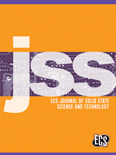
ECS Journal of Solid State Science and Technology
Catalyzing Breakthroughs in Solid State TechnologiesECS Journal of Solid State Science and Technology, published by the Electrochemical Society, is a prominent journal dedicated to the advancement of research in the field of electronic, optical, and magnetic materials. With an ISSN of 2162-8769 and an E-ISSN of 2162-8777, this journal has established a significant presence since its inception in 2012, spanning critical developments in solid-state science that are essential for innovative technologies. Operating within the United States and recognized for its global outreach, it holds a respectable Q3 category ranking in the materials science category as of 2023, reflecting its commitment to high-quality research and its role in bridging theoretical and applied aspects of materials science. Researchers, professionals, and students alike will find vital information and cutting-edge studies that further the understanding and applications of solid-state technologies. The journal is accessible to an extensive audience, making it an invaluable resource for those engaged in the ever-evolving landscape of materials science.
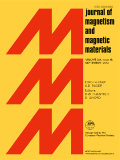
JOURNAL OF MAGNETISM AND MAGNETIC MATERIALS
Connecting Ideas in Magnetism ResearchJOURNAL OF MAGNETISM AND MAGNETIC MATERIALS, published by Elsevier, stands at the forefront of research in the fields of magnetism and magnetic materials. With an established history since 1975 and a commitment to advancing knowledge through rigorous peer-reviewed studies, this journal has become a valuable resource for researchers and academics alike. Housed in the Netherlands and indexed under Scopus, it ranks Q2 in both Condensed Matter Physics and Electronic, Optical and Magnetic Materials, reflecting its impact within these domains. The journal aims to disseminate innovative research findings, methodologies, and reviews pertaining to magnetic phenomena, thus facilitating significant advancements in applications ranging from data storage technologies to medical imaging. While the journal does not feature open access options, it remains a vital part of the scientific dialogue, showcasing content that attracts a diverse audience, including researchers, professionals, and graduate students dedicated to enhancing their understanding of magnetism in various materials.
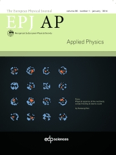
EUROPEAN PHYSICAL JOURNAL-APPLIED PHYSICS
Fostering Collaboration in Cutting-edge ResearchEUROPEAN PHYSICAL JOURNAL-APPLIED PHYSICS, published by EDP SCIENCES S A in France, serves as a vital platform for the dissemination of cutting-edge research in the fields of condensed matter physics, electronic, optical and magnetic materials, and instrumentation. With an ISSN of 1286-0042 and E-ISSN of 1286-0050, this journal has been a valuable resource for researchers since its inception in 1998, aiming to foster innovation and dialogue among professionals and academics alike. Featuring an impact factor that reflects its growing influence, the journal is currently ranked in the Q4 quartile for several related categories in 2023, underscoring its ongoing contributions to the scientific community despite its relatively competitive positioning. Access to the journal is available through various Open Access options, ensuring that pioneering research is readily accessible to all. As it continues to evolve towards its 2024 objectives, EUROPEAN PHYSICAL JOURNAL-APPLIED PHYSICS remains dedicated to advancing knowledge and facilitating collaboration in applied physics, making it an essential resource for students, researchers, and professionals dedicated to exploring the forefront of physical sciences.
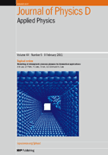
JOURNAL OF PHYSICS D-APPLIED PHYSICS
Connecting Researchers to the Pulse of Applied PhysicsJOURNAL OF PHYSICS D-APPLIED PHYSICS is a prestigious peer-reviewed journal published by IOP Publishing Ltd, dedicated to advancing the field of applied physics since its inception in 1967. With an impressive impact factor that reflects its standing in the academic community, this journal occupies Q1 and Q2 rankings across various categories including Acoustics and Ultrasonics, Condensed Matter Physics, and Electronic, Optical and Magnetic Materials, underlining its vital role in disseminating significant research findings. The journal aims to publish high-quality original research articles, reviews, and technical notes, providing a platform for professionals, researchers, and students alike to explore a broad spectrum of topics within applied physics. With a commitment to accessibility, articles are made available for readers around the globe, ensuring that groundbreaking discoveries reach a wide audience. Located in the United Kingdom, at TEMPLE CIRCUS, TEMPLE WAY, BRISTOL BS1 6BE, the journal continues to push the boundaries of knowledge in physical sciences, making it an essential resource for anyone involved in this dynamic field.

IEEE Magnetics Letters
Connecting Ideas and Innovations in MagneticsIEEE Magnetics Letters, published by IEEE-INST ELECTRICAL ELECTRONICS ENGINEERS INC, is a leading journal focusing on the rapidly evolving field of magnetics, encompassing electronics, optics, and magnetic materials. With an ISSN of 1949-307X and an E-ISSN of 1949-3088, this journal serves as a premier platform for researchers to disseminate innovative findings, discussions, and reviews from 2010 to 2024. Recognized for its contribution to the field, it is classified in the third quartile (Q3) of Electronic, Optical and Magnetic Materials, and it holds a respectable place in Scopus rankings, positioned #189/284 in its category. Although it operates under traditional access options, the journal remains vital for professionals and academics seeking to deepen their understanding of magnetics and its applications in modern technology. With its commitment to advancing knowledge and fostering innovation, IEEE Magnetics Letters continues to be an invaluable resource for those engaged in cutting-edge research.

Nanosystems-Physics Chemistry Mathematics
Empowering Researchers with Cutting-Edge Nanosystems KnowledgeNanosystems-Physics Chemistry Mathematics is a prominent academic journal dedicated to advancing knowledge in the interdisciplinary fields of condensed matter physics, materials science, and mathematics. Published by the St. Petersburg National Research University of Information Technologies, Mechanics, and Optics, this journal plays a crucial role in disseminating valuable research findings and theoretical developments from 2019 to 2024. With an evolving scope that reflects the latest trends and methodologies, the journal strives to connect researchers, professionals, and students with groundbreaking discoveries and applications in nanotechnology and related areas. Although it currently holds a Q4 rating in Condensed Matter Physics and ranks within the Q3 tier in several categories, its commitment to promoting open dialogue and innovative solutions highlights its potential for growth and impact. Researchers can access various formats to ensure the accessibility of knowledge, further enriching the academic community's engagement with cutting-edge scientific developments.

ACTA PHYSICA POLONICA A
Exploring Breakthroughs in General PhysicsACTA PHYSICA POLONICA A is a distinguished peer-reviewed journal published by the Polish Academy of Sciences Institute of Physics, offering a platform for disseminating cutting-edge research in the field of physics and astronomy. With an ISSN of 0587-4246 and an E-ISSN of 1898-794X, this journal has been a staple for scholars since its inception, converging its publication years from 1996 to 2024. Despite its current Q4 classification in the Physics and Astronomy (miscellaneous) category, ACTA PHYSICA POLONICA A provides valuable insights and breakthroughs addressing various aspects of general physics. Researchers, professionals, and students will find a wealth of knowledge within its pages, even as it operates in an evolving academic landscape. While subscription options exist, the journal aims to foster collaboration and knowledge exchange in the physics community, making it a vital resource for those seeking to stay at the forefront of research advancements.

Nano Express
Empowering innovation through open-access research.Nano Express is an esteemed open-access journal published by IOP Publishing Ltd, dedicated to advancing research in the fields of nanotechnology and materials science. Since its launch in 2020, the journal has swiftly established itself as a vital resource for researchers and professionals, garnering significant recognition in various domains, including biomaterials, electronic, optical and magnetic materials, and polymers and plastics. With a commendable categorization in Scopus quartiles, it ranks in Q2 for Electronic, Optical and Magnetic Materials, and maintains a top percentile in several others, exemplifying its commitment to high-quality research dissemination. Located in the United Kingdom, this journal fosters a global dialogue among experts and newcomers alike, facilitating open access to innovative research that drives the future of nanotechnology. By offering a platform for groundbreaking studies and reviews, Nano Express aims to bridge the gap between theoretical understanding and practical application, championing the development of next-generation materials that have the potential to transform various industries.
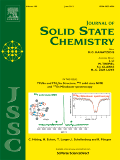
JOURNAL OF SOLID STATE CHEMISTRY
Connecting Researchers to Cutting-edge ChemistryWelcome to the Journal of Solid State Chemistry, a prestigious publication that has been at the forefront of solid state chemistry research since its inception in 1969. Published by Academic Press Inc. Elsevier Science in the United States, this journal offers a rigorous platform for the dissemination of high-impact research articles and reviews in a wide array of categories such as Ceramics and Composites, Condensed Matter Physics, and Materials Chemistry, among others. With an impressive Q2 ranking across multiple categories in 2023 and a commendable performance in Scopus rankings—including a top position in Inorganic Chemistry—this journal serves as an essential resource for researchers, professionals, and students eager to advance their understanding in solid state phenomena. Although it does not currently offer Open Access options, the breadth and quality of the published research ensure significant visibility and scholarly impact. As we continue to converge into 2024, we invite you to explore groundbreaking studies that push the boundaries of knowledge in solid state chemistry.

Journal of Advanced Dielectrics
Elevating the Standards of Dielectric and Material ResearchThe Journal of Advanced Dielectrics, published by World Scientific Publishing Co Pte Ltd, is a pivotal open-access platform since 2014 dedicated to advancing research in the fields of dielectrics, ceramics, and composites. Based in Singapore, this journal aims to bridge the gap between theoretical developments and practical applications in Electrical and Electronic Engineering, Condensed Matter Physics, and Electronic, Optical, and Magnetic Materials. With an impressive classification in the 2023 Quartile Rankings indicating its significance within its categories, and notable Scopus Rankings that highlight its impact and relevance, this journal serves as a vital resource for scholars and professionals committed to cutting-edge research and innovation. As it continues to flourish through the converging years from 2015 to 2024, the Journal of Advanced Dielectrics stands as an essential conduit for the dissemination of knowledge in advanced material sciences, making it an indispensable asset for today's research community.